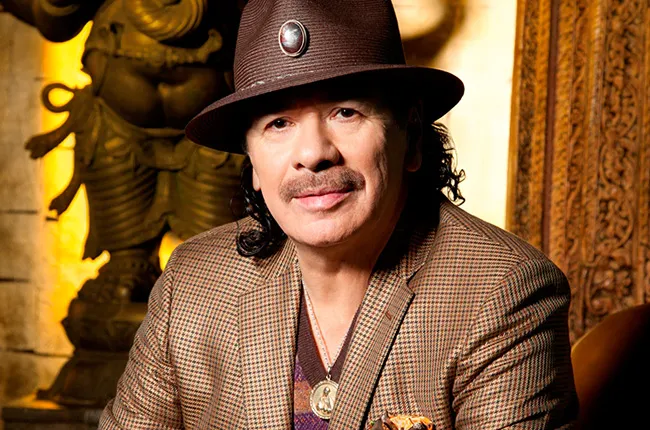Carlos Santana, the legendary guitarist who brought a unique blend of rock, Latin, and jazz influences to the global stage, has long been admired for his musical genius and spiritual wisdom. Known for hits like Black Magic Woman and Smooth, Santana has spent decades inspiring audiences not just through music but through his philosophy of peace, love, and mindfulness. Yet, behind his public persona lies a deeply personal and painful chapter that he kept hidden for decades—a secret he recently revealed with remarkable honesty and courage.
In a candid interview, Santana disclosed that he was sexually abused during his childhood by an American man who crossed the border into Mexico. The abuse occurred when Santana was between the ages of 10 and 12, a formative time in his life. He described this period as having “stolen” his childhood. The experience left lasting emotional scars, but for years, he carried this trauma in silence. Sharing such a deeply personal and painful story was not easy, but Santana felt compelled to speak out, hoping to offer solace and hope to others who may have suffered similar experiences.
What makes Santana’s story particularly remarkable is how he chose to respond to this trauma. Instead of allowing anger, bitterness, or resentment to dominate his life, he sought healing through spirituality, mindfulness, and forgiveness. Santana explained that he learned to view his abuser with compassion, recognizing the saying, “hurt people hurt people.” This perspective did not excuse the wrongdoing, but it allowed him to release the hold that pain had over him. He emphasized the importance of letting go, sharing, “Open your hands and let it go.” For Santana, forgiveness was not about the person who harmed him; it was about reclaiming his own peace and moving forward with his life.
“For example, this person who abused me sexually, instead of sending him to hell forever, I visualized him like a child, and behind him there was a lot of light,” he says. “So I can send him to the light or send him to hell knowing that if I send him to hell, I’m going to go with him. But if I send him to the light, then I’m going to go with him also.”
He continues: “There’s this saying, ‘Hurt people hurt people.’ It’s my pain. It did happen to me. But if you open your hands, and you let it go, then you don’t feel that anymore.”
Santana’s journey of healing is an inspiring testament to the human spirit. Trauma can leave invisible scars, but his story shows that even the deepest wounds can be transformed into a source of strength and growth. Overcoming childhood abuse is never simple, and Santana acknowledged the complexity of emotions involved. However, through music, spirituality, and the conscious practice of forgiveness, he found a path to inner peace.
This revelation also sheds light on the ways personal trauma can influence creative expression. Santana’s music often carries emotional depth and a sense of soulful reflection, traits that many believe are connected to his life experiences. For fans, understanding the challenges Santana faced adds another layer of appreciation for his artistry. It is a reminder that behind the brilliance of celebrated musicians are human beings who grapple with pain, resilience, and growth.
Santana’s decision to share his story is not only a personal act of courage but also a message to others who have experienced abuse or trauma. By speaking openly, he encourages survivors to seek healing and support, whether through therapy, community resources, or spiritual practices. His message is clear: the past does not have to define the future, and recovery is possible.
For those interested in exploring more about Santana’s life and journey, the documentary Carlos offers an intimate look at his formative years, musical evolution, and personal challenges. It provides insight into how Santana transformed adversity into creativity and spiritual growth.
Ultimately, Santana’s story is a powerful reminder that resilience, forgiveness, and self-discovery can emerge even from the darkest moments of life. By sharing his experience, Santana not only confronts his own past but also provides hope to countless others, proving that healing is possible, and that one’s history does not have to dictate their destiny.

